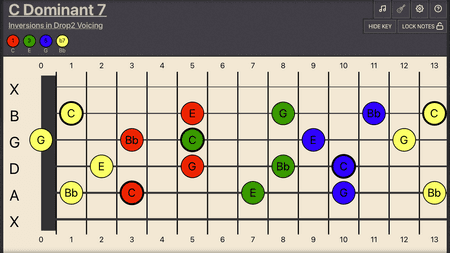Colour-coded Fretboard Diagrams!

50+ Chord Types
Colour-code the chord notes to show a specific voicing and each inversion across the fretboard. The user interface makes it simple to find alternative fretting options on different groups of strings.
- Three-note chords in two kinds of voicing
- Close
- Open
- Four-note chords in five kinds of voicing
- Close
- Drop2
- Drop3
- Drop23
- Drop24

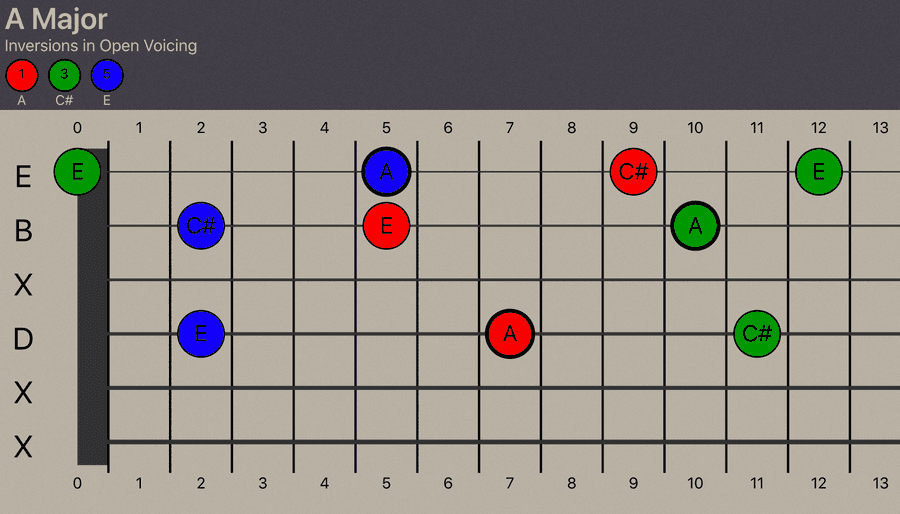
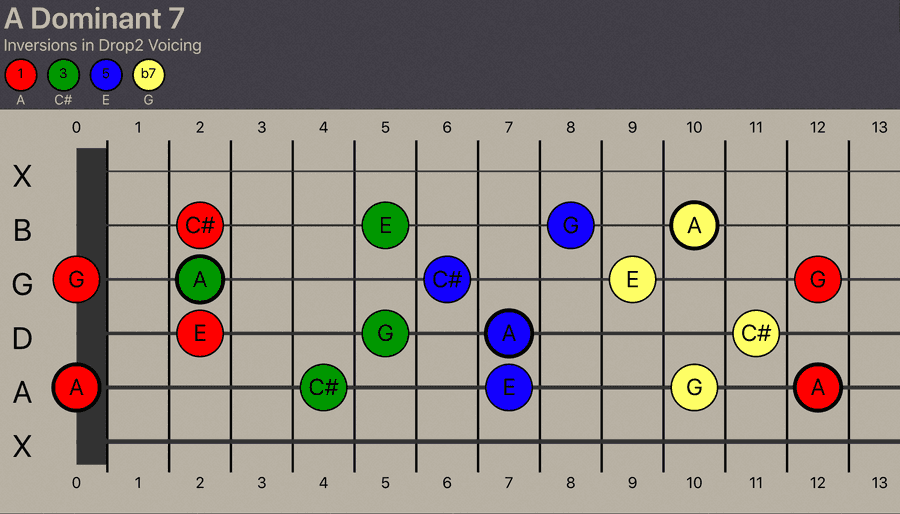
60+ Scale Types
Colour-code the notes of a scale to display how it could be harmonised into a collection of sequential chords using a specific voicing and inversion.
- Over 100 preset options to harmonise the C Major Scale! These presets can be applied to any musical key and to any diatonic or heptatonic scale!
- Harmonise Pentatonic scales and five note chords, blurring the line between scale and chord!
- Presets to harmonise Hexatonic (six-note) scales into Triad pairs and more!
- Presets to harmonise Octal (eight-note) scales into a pair of four-note chords and their inversions across the fretboard.
Can't find what you're looking for? The User interface enables users to customise how the diagram is colour coded. Simply click (or touch) and then drag along a single string to cycle the colour.

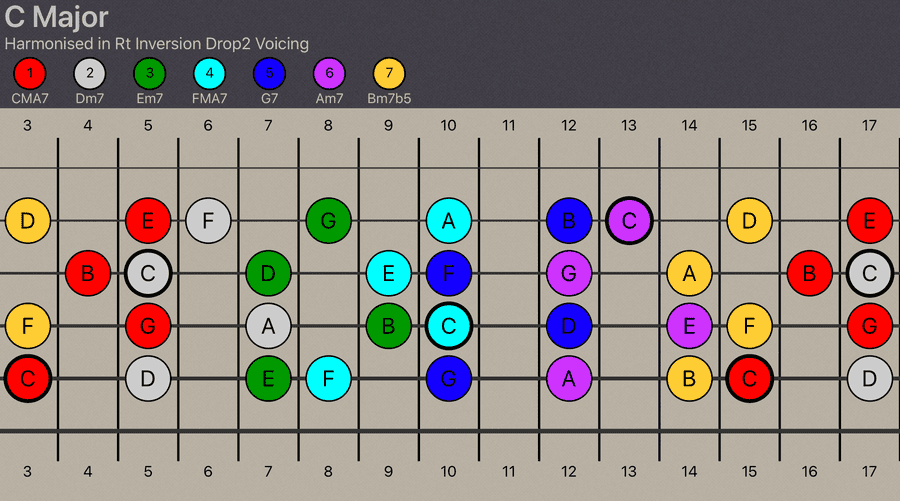
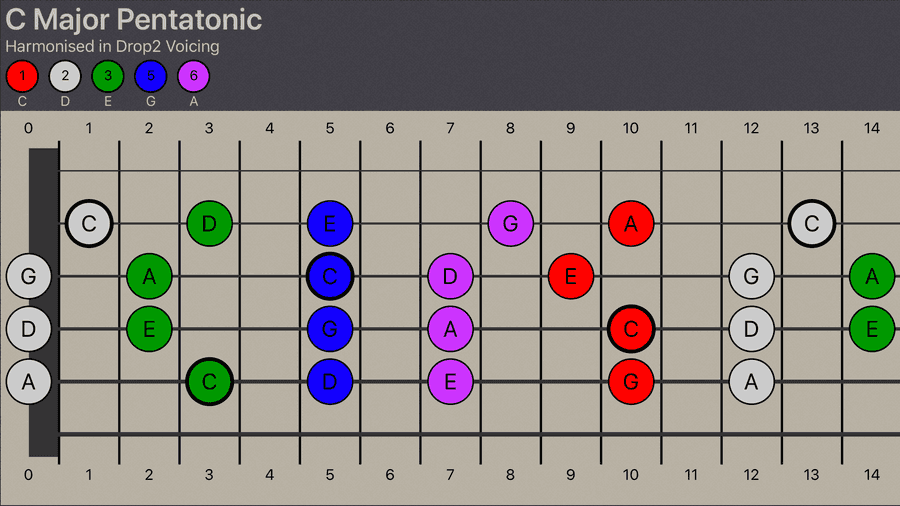
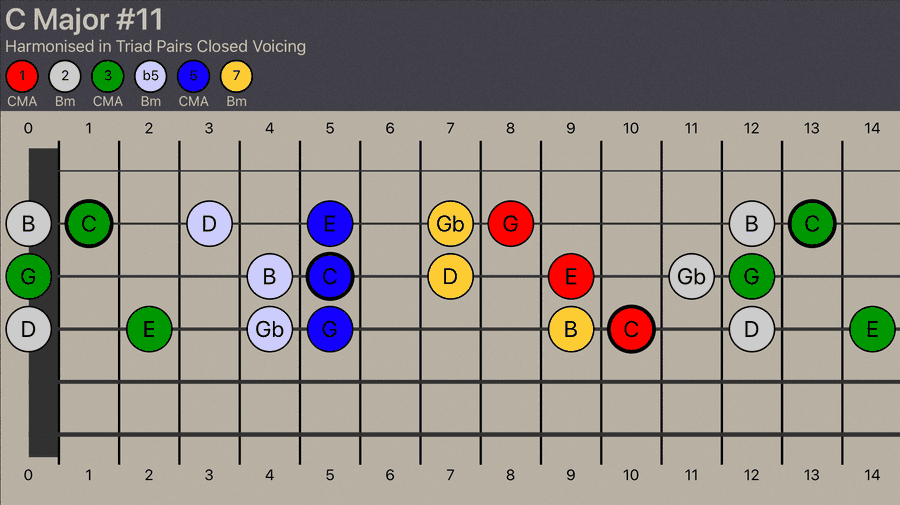
Finger Positions!
Fretharmony can display a variety of finger-position methodologies for learning scales or arpeggiating chords sequentially as single notes. Every option is cyclical, enabling users to survey specific fretboard positions quickly, including caged and three-note per string methods.
- The C-A-G-E-D system. As this method can apply to any five, six, seven or eight-note scale, it includes particularly unusual caged forms.
- Three-note-per-string option for any five, six, seven or eight note scale.
- Two-string repeating patterns that move along the fretboard and across the strings. This method applies to three chords, eight-note scales and everything in between.
- Cycle any of the positions horizontally along the neck, this enables users to find the gaps in their fretboard knowledge and improve intuition.
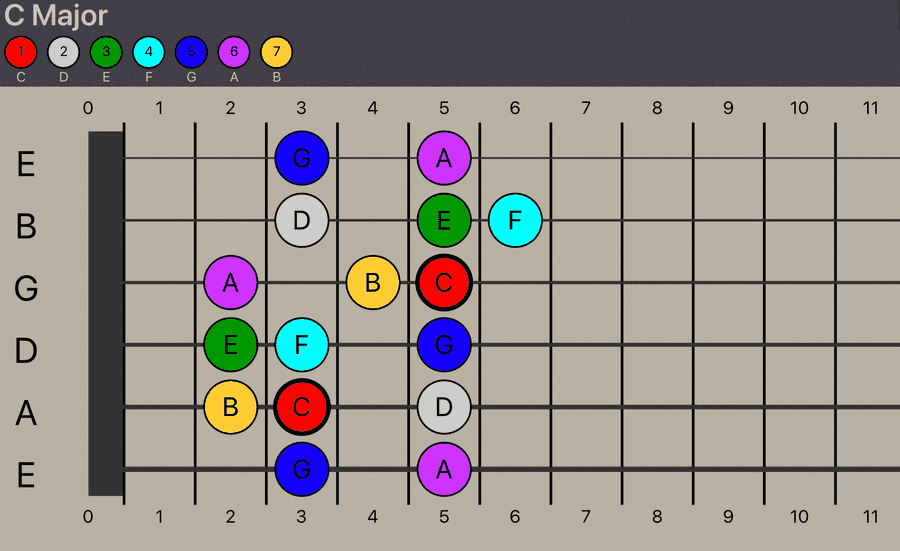
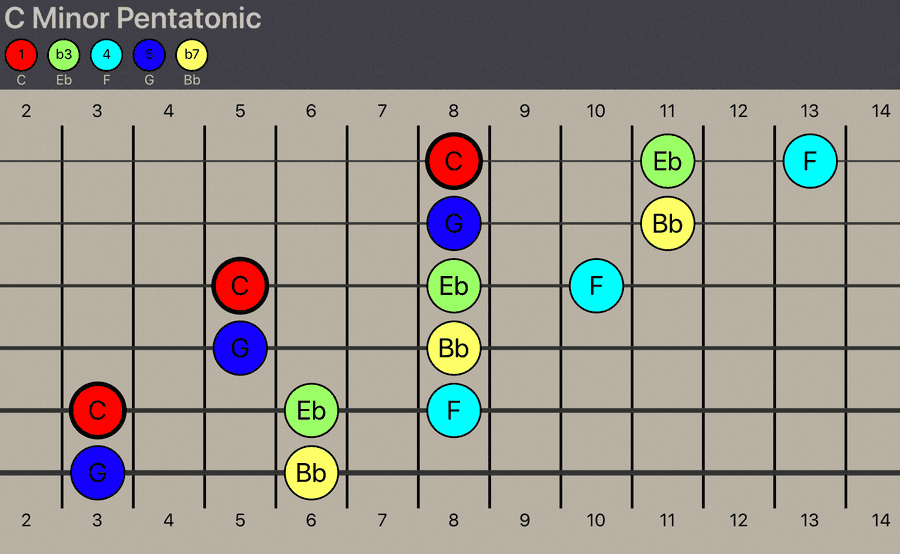

Instrument Features
There are various guitar tunings and other fretboard instruments to choose from. It's easy to customise the colour key and size of the diagram.
- Over 25 different guitar tunings
- Open Chord Tunings
- Suspended Tunings
- Customisable Tunings
- Six types of fretboard instrument.
- Guitar
- Ukulele
- Mandolin
- Bazouki
- 7 String Guitar
- Bass Guitar
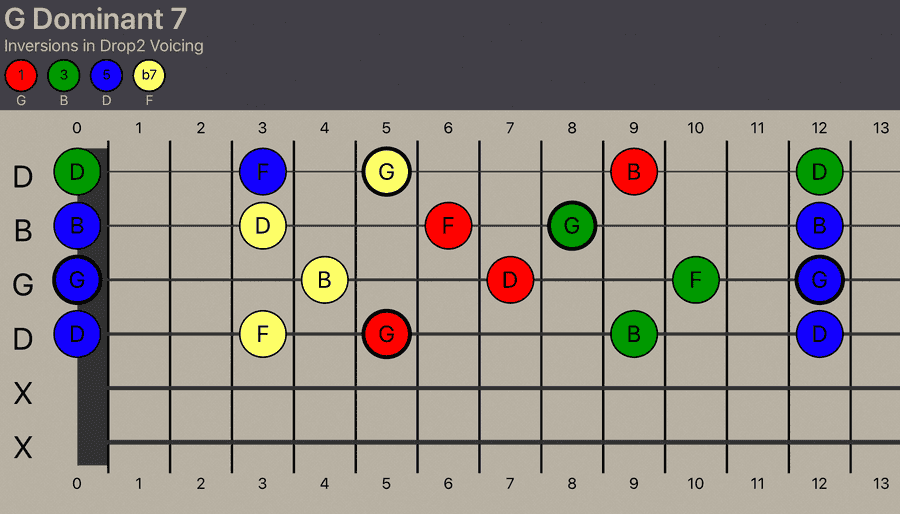

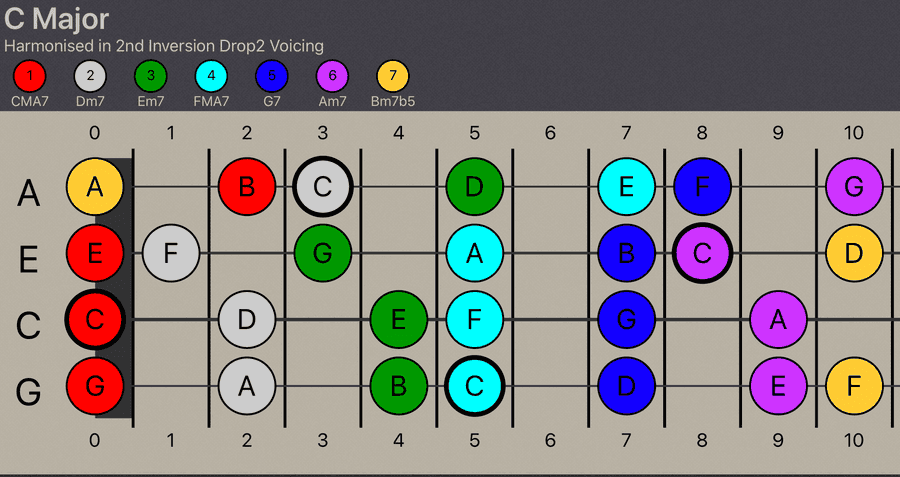
Note Labelling
Choose how the notes on the fretboard diagram are labelled, making it easy to quickly cross reference between different note naming conventions.
- Letter names, sharps or flats. Fretharmony attempts to select the optimum key signature. (Work in progress for future features. No double accidentals as of yet.)
- Numerical scale-tones and chord-tones. Including options for extensions and altered notes.

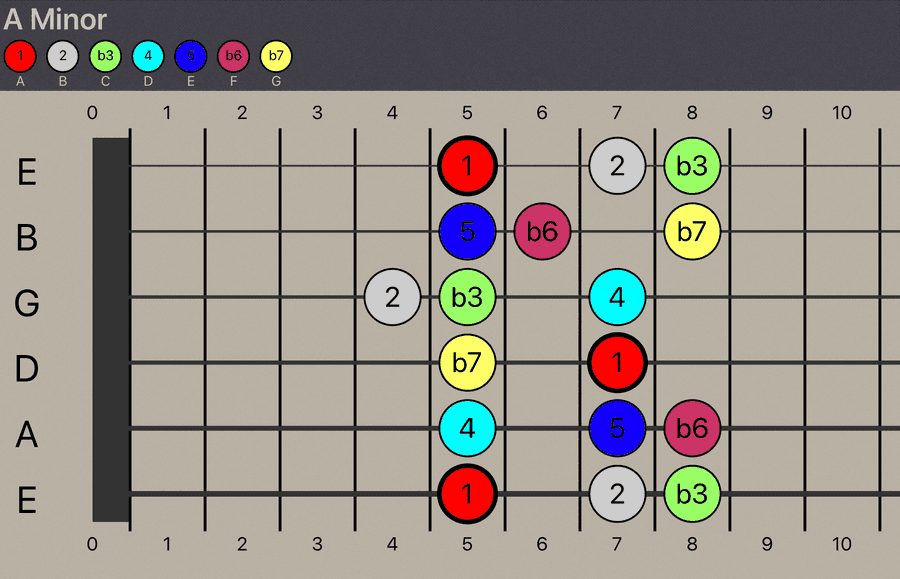
Transposition
The transposition feature enables users to change the harmonic context of a fretboard diagram within a key. Making it easy to find alternative uses for familiar fretting positions, almost like a thesaurus of harmony.
A thesaurus of harmony
Notice how all chords in the accompanying accordion have similar fretting shapes. The colours (context) may differ, but the physical fretting positions are identical.
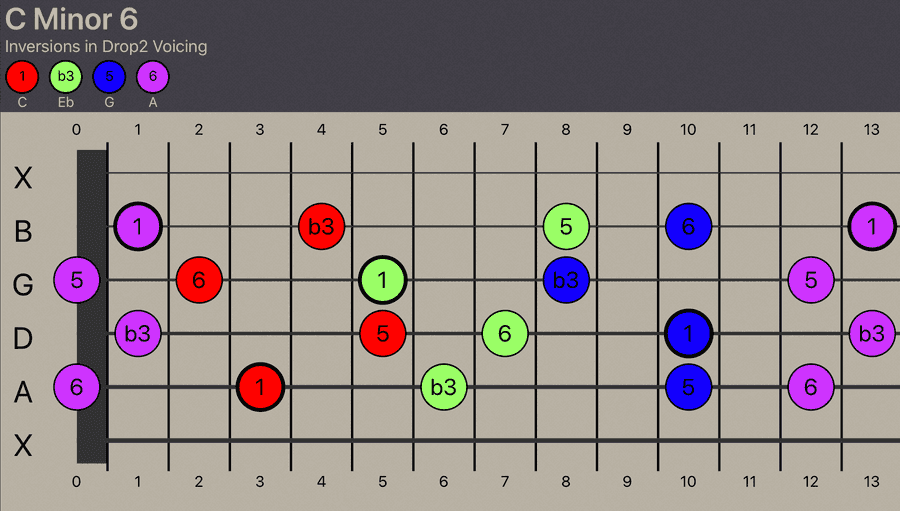
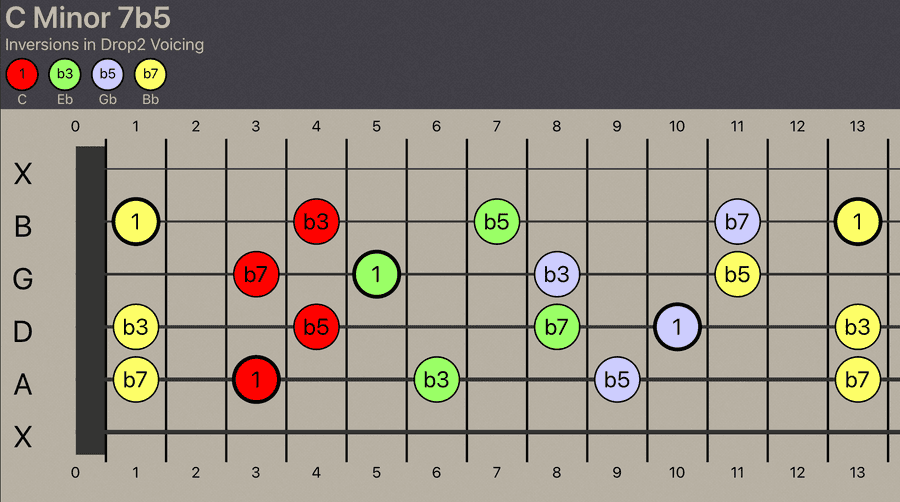
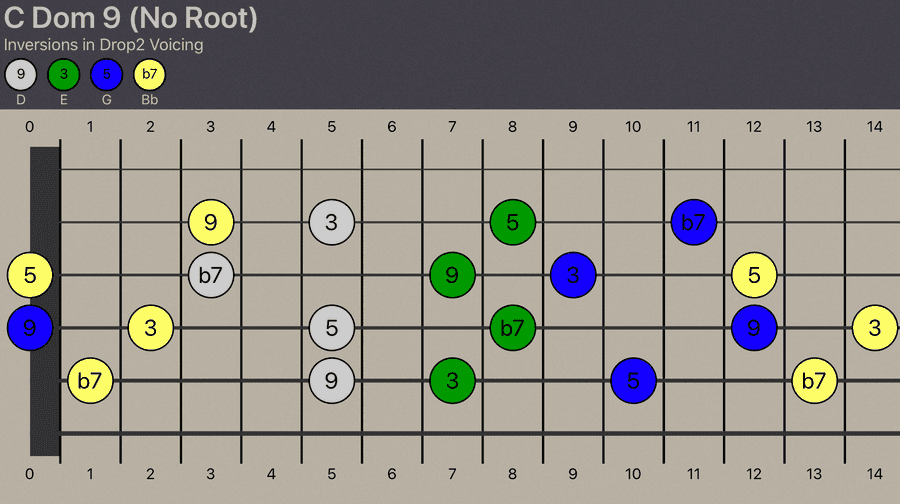

Why Fretharmony?
Quickly access and survey thousands of fretboard diagrams.
Using colour to code fretboard diagrams gives them an extra visual dimension, conveying harmonic information alongside the physical positions.
Fretharmony provides opportunities for discovery, reinforces fretboard knowledge and helps evaluate blind spots. The areas you didn’t know that you didn’t know.
Fretharmony makes it easy for users to focus on developing muscle memory and fretting dexterity. Applying simple practice exercises derived from the diagrams provides a logical and intuitive approach to learning. Blending the physical and technical processes alongside the mind and theoretical, simultaneously improving aural, physical and theoretical knowledge.
If you can play simple songs in time, using Open Position Chords and the occasional Barre Chord, then Fretharmony can help you practice.
Having a solid understanding of music theory and harmony is not a prerequisite. However, accepting fundamental harmonic theories like chord voicing and inversions is an advantage.
Guides
There are a number of guides explaining in detail all of the features and theoretical concepts.
- Getting Started With Fretharmony
- An introduction to triad chords, voicing and inversions and their relationship with diatonic harmony. (Membership Exclusive)
- An explanation of Drop Voicing and four-part harmony.
Upcoming guides on the following subjects.
- An introduction to hexatonic scales harmonised into triad pairs.
- Methods for harmonising pentatonic scales and five-note chords.
- An introduction to eight-note scales harmonised into pairs of tetrads. The basics of Barry Harris’ Major and Minor Diminished Scales.
Blog / Vlog
Youtube Channel
Blog
A blog aims to provide un-opinionated takes on approaches to practice. Explaining exercises in detail from scale or arpeggio sequences to rhythmic variations or motifs that could be applied across a harmonised scale or specific chord progressions.
Recent Posts
![Creating Exercises And Practice Routines Using Only Four Notes]()
Creating Exercises And Practice Routines Using Only Four Notes
Today’s post introduces creating practice routines and exercises using only four-notes a framework. Using only four notes enables a refined approach to survey fretboard opportunities and helps develop a creative understanding of harmony. Youtube Playlist Focussing On Practice Exercises Using Four notes I have released a new YouTube playlist about practice routines and exercises using […]
![Creating Exercises Using Seven-Note Diatonic Scales]()
Creating Exercises Using Seven-Note Diatonic Scales
Today’s post introduces creating practice routines and exercises using seven-note diatonic scales as a framework. Unlike practice routines using only three or four individual notes, seven-note diatonic scales can be derived into many different types of chords and allow for a huge variation of options. However, While it may seem complicated, there are underlying patterns […]
![Creating Exercises And Practice Routines Using Only Three Notes]()
Creating Exercises And Practice Routines Using Only Three Notes
Using three note collections to develop practice routines may seem limiting, but their simplicity is provides advantageous opportunities. One crucial aspect of practice routines using only three notes is they allows for a refined approach to survey fretboard opportunities and creative harmony. I have released a new YouTube playlist that is all about practice routines […]
